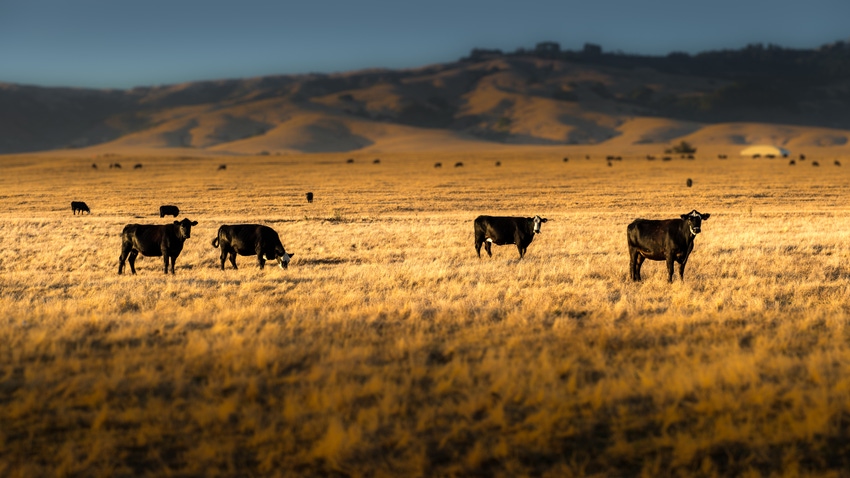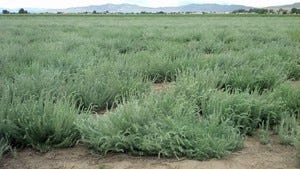Forage kochia, a perennial plant different from annual kochia weed, shows promise for improving rangeland grazing.
March 19, 2019

As weather patterns change and cause drier conditions, rangelands and pastures may need revegetation. Meanwhile, livestock producers are looking for ways to provide nutritional forage for their animals.
To meet both needs, New Mexico State University (NMSU) College of Agricultural, Consumer & Environmental Sciences researchers are searching for forage plants that will adapt to the changing weather patterns, according to an announcement.
One plant showing promise for improving rangeland in other parts of the western U.S. is forage kochia (Kochia prostrata), which is a perennial plant and is different from the annual kochia (Kochia scoparia) weed that is prominent in the region, NMSU said.
“Range Changer is an independent seed dealer that has worked with Utah State University to plant thousands of acres of forage kochia in similar elevations and terrain as northern New Mexico,” said Donald Martinez, NMSU Extension agricultural agent in Rio Arriba County. “When I saw the success of this forage, I thought this is something we need to introduce into New Mexico.”
NMSU Extension forage specialist Mark Marsalis and Martinez are conducting test plots of forage kochia on cooperators’ land in northern New Mexico.
“We are trying to find a forage that can adapt to our environment to improve our grazing,” Martinez said. “We are looking for an alternative forage for our livestock and wildlife.”
Last year, the researchers selected six locations that have different soil types and are at different elevations — between 5,000 and 9,000 ft. — to see whether forage kochia would grow.
“Unfortunately, last year was the driest on record,” Martinez said. “Only one plot had moisture, so it was the only one that showed some growth.”
Before the researchers could evaluate the plants, a herd of elk devoured the forage, they said.

“So, we know the high-protein forage is palatable to wildlife,” Martinez said. “We just hope the elk didn’t uproot all of the plants. We’ll have to see what returns this spring.”
One positive aspect of this forage is that little or no soil preparation is needed before planting the seeds.
“What’s intriguing is that you don’t have to till the soil before planting,” Martinez said. “You just broadcast the seed on top of the ground, and it has a high germination rate. This allows us to not disturb the natural grasses, which will help prevent soil erosion by the wind.”
Source: New Mexico State University, which is solely responsible for the information provided and is wholly owned by the source. Informa Business Media and all its subsidiaries are not responsible for any of the content contained in this information asset.
You May Also Like


.png?width=300&auto=webp&quality=80&disable=upscale)
